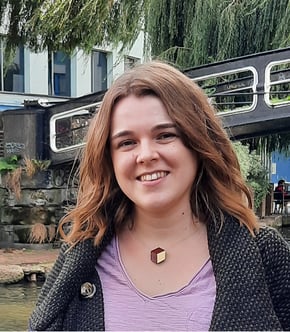Smart cities are always looking for ways to make their neighbourhoods greener and more liveable. The COVID-19 pandemic has shown the importance of 15-minute cities, an idea that is particularly visible in Paris. Now, C40, the global network of mayors, has launched the Global Network of Sustainable Proximities. What is hiding behind this somewhat cryptic name and what can cities learn from it?
The importance of proximities for future cities
By now, city makers have a good idea what the ideal city of the future should look like: It should be green, walkable, carbon neutral, smart, and liveable. Some cities are on a good way to ticking most of these boxes: For example, London is one of the world’s smartest cities and committed to reaching carbon neutrality by 2030. And in its recent annual survey on the most liveable cities in the world, The Economist has (again) crowned Vienna as particularly attractive.
Someone who knows a lot about liveable cities is Carlos Moreno, a Franco-Colombian professor and advisor to Paris mayor Anne Hidalgo. He has coined the term “15-minute city”, which describes the idea that all daily needs around living, working, supplying, caring, learning, and enjoying should be accessible to urban residents within 15 minutes of walking or cycling time. According to Professor Moreno, who recently spoke at the Urban Future Conference in Stuttgart, the 15-minute city is a revolution for redesigning the quality of life.
This proximity of having all functions of the city in 15 minutes or less distance requires a transformation of mobility, as well as a new understanding of proximities: Carlos Moreno suggests understanding the 15-minute city not just in spatial terms, but also in cultural and cognitive terms.
That means that for a thriving neighbourhood, planners also should consider these factors:
- Mixity: A social mix and mixed-use buildings help to make neighbourhoods more liveable and to ward off gentrification.
- Density: Organic and human-scale neighbourhoods, as promoted by Danish architect Jan Gehl, help to make a dense and polycentric city possible.
- Ubiquity: COVID has shown that it is possible to localise services through the use of smart technologies, be they vaccination centres or waste collection.
By the way: In October 2022, we interviewed Carlos Moreno on his 15-minute city ideas.
Proximities in action
Just a few weeks ago, the city of Paris adopted the Local Urban Climate Plan, which is based on the 15-minute city. The idea is that a city of proximity will emit much less CO2 while offering a higher quality of life at the same time. By rethinking existing facilities and adapting the management of public services, Paris wants to provide all urban functions in a 15-minute walking or 5-minute cycling radius.
As Carlos Moreno points out, the 15-minute city is not a “magic wand”. Instead, it must be adapted to the local conditions of each city. In Paris, there is an imbalance between East and West and between North and South. The economic situation and the housing scarcity in particular are challenges of the French capital. To achieve more proximity, the professor suggests transforming existing places to allow for carrying out several activities at once rather than just one. Schools are in the focus and could become the “capital” of their district due to their central space. By opening some school spaces to the public, there will be more green spaces, more spaces for cultural activities, and opportunities for participatory democracy. Outside of school hours, Parisians will find recreational, sporting, and cultural activities. New citizen kiosks will be nearby. Here, citizens can meet, help each other, ask for advice, and contact city officials or associations.
EXPLORE PROVEN SMART CITY SOLUTIONS
Find more Smart City strategies and solutions. Connect with cities and solution providers from all over the world. Get access to our platform. Register for free.
In Oslo, the mayor is aspiring to create a 10-minute city. Public transport hubs are key to this approach. They reduce car traffic and offer much better traffic links, while also serving as meeting places. Public transport in the city is already fully electric and 80% of cars sold now are electric vehicles. The city is also implementing new biking lanes and experimenting with climate budgeting.
In Madrid, the city is starting by investing in urban analysis: A detailed data collection is underway to evaluate the need for the 15-minute city by considering all possible pedestrian routes, economic activities, mobility options, and public spaces. Based on the results, the city is now planning new mixed-use hubs on the outskirts to create new proximities.
And companies are also picking up on the importance of proximity. IKEA is reinventing some of its retail hubs to foster green and liveable neighbourhoods, for example through new city formats and sizes, zero-emissions delivery zones, and community involvement. A new flagship IKEA store in Copenhagen will open in August 2023, showing how businesses can contribute to community engagement, improved mobility, and economic inclusion through jobs. While the private sector is certainly benefiting from this idea, companies like IKEA that “walk the talk” can actively contribute towards cities of proximities.
The Global Observatory for Sustainable Proximities: Recommendations for better cities
While not every city can easily adapt the planning concept of 15-minute neighbourhoods, there are countless lessons to be learned from the idea of proximities. The Global Observatory for Sustainable Proximities wants to show that these kinds of neighbourhoods promote well-being and effective climate action.
It has the following recommendations for policy- and city-makers:
- Place people at the centre of the urban plan. Find out what their needs are and focus on collaboration.
- Free up time spent travelling. Better and quicker transport across the city can help to reduce CO2 emissions and to promote active transport such as walking and cycling.
- Free up space dedicated to cars. Re-dedicating urban spaces to residents will lead to thriving neighbourhoods.
- Distribute essential social functions such as living, working, supplying, caring, learning, and enjoying equitable so that all residents can benefit from shorter access times.
The Global Observatory for Sustainable Proximities offers implementation guides, policy briefs, and research articles on questions such as “How to support access to healthy food”, “How to grow cycling”, “How to finance the 15-minute city concept”, and “How to measure the success of a 15-minute neighbourhood.” There are case studies, the 15-minute-city strategies of cities from all over the world, initiatives that you can filter by theme, and events – now it is up to city planners to be smart and use these inspiring resources to create green, thriving neighbourhoods.
A SMART CITY IS AN ECOSYSTEM OF SMART CITY SOLUTIONS
Discover a wide range of sustainable initiatives and a plethora of innovative smart solutions within the premier global network and community for smart cities. Connect with a vibrant community of thousands of members from all corners of the globe, fostering the exchange of ideas, sharing of solutions, and learning from valuable experiences.



